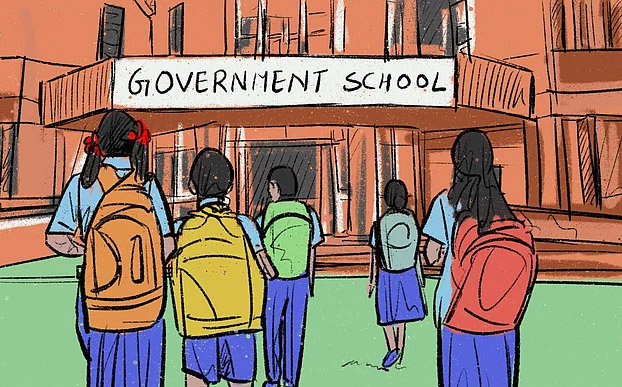Dr Satwant Singh Rissam
Civil society members should resume discussions on every platform about the prevailing government education system in today’s J&K, as this is crucial for two reasons. In August 2024, the Jammu and Kashmir government announced that it was considering a proposal requiring government employees to enroll their children in public schools. Several representations were submitted against this proposal, which may lead to its withdrawal. The representations highlighted the deteriorating learning environment, directly indicating a lack of confidence in government schools among government employees. Additionally, the Jammu and Kashmir government announced the merger of 4,358 schools under a rationalization scheme. Among these, 1,274 institutions are from the Jammu region, and 3,084 are from the Kashmir region.
Expanding educational opportunities for low-income families remains necessary in both regions. Government schools in Jammu and Kashmir require reforms to address infrastructural deficiencies, teacher-student ratio challenges, and insufficient learning environments. The new government should embrace innovative changes to facilitate a comprehensive shift that could significantly transform the educational framework. A new set of educational strategies can be tailored and implemented to tackle schooling issues for children from low-income families. The commitment to enhance public services should begin with a mission to reform government schools.
To begin with, a strategy focusing on substantial infrastructure investments should be developed. The government should increase spending in the education sector, upgrading all classrooms to international standards, with an emphasis on establishing high-tech IT labs. This would result in a significant boost in government school facilities. To provide quality education, the renovation of existing buildings and the addition of classrooms will enhance learning systems. In Jammu and the Kashmir region, numerous schools operate from deteriorating structures or lack adequate facilities. This clearly demands urgent action to ensure that every child can access a secure educational environment.
Teacher training should be part of the strategy. Some programs should be designed to bridge the learning gap by training teachers to deal with students at various levels. This needs specialized training in modern teaching methods because teachers come from diverse educational backgrounds themselves. Considering these concerns, conducting regular competency tests for all teachers will empower teachers and would lead to better student engagement and attendance in Government schools. In addition, the new education curriculum should be introduced which emphasizes on complete growth of children instead of merely academic success. Such programs possibly will assist in reflecting that the Government truly cares for the future of those children who cannot afford costly private education.
Many resources and opportunities have been wasted before. The monitoring authorities are fully negligent and manipulate student records to conceal the real situation. Furthermore, reforms will be sustainable only when the governance approach includes transparency, and the funds are utilized effectively because corruption and inefficiency led to the mismanagement of funds openly in the past. Implementing such a model in Jammu and Kashmir would not be without challenges because J&K’s education system spans both urban and remote areas. Still, if the steps are taken to implement the education reform model and adapted quickly in J&K, this could serve as the biggest example of the new governance standard. All it needs is acceptance by local stakeholders, and the political will to implement by rising above petty politics. With this mission to reform government schools, thousands of children in the J&K can shape the future of this region.


